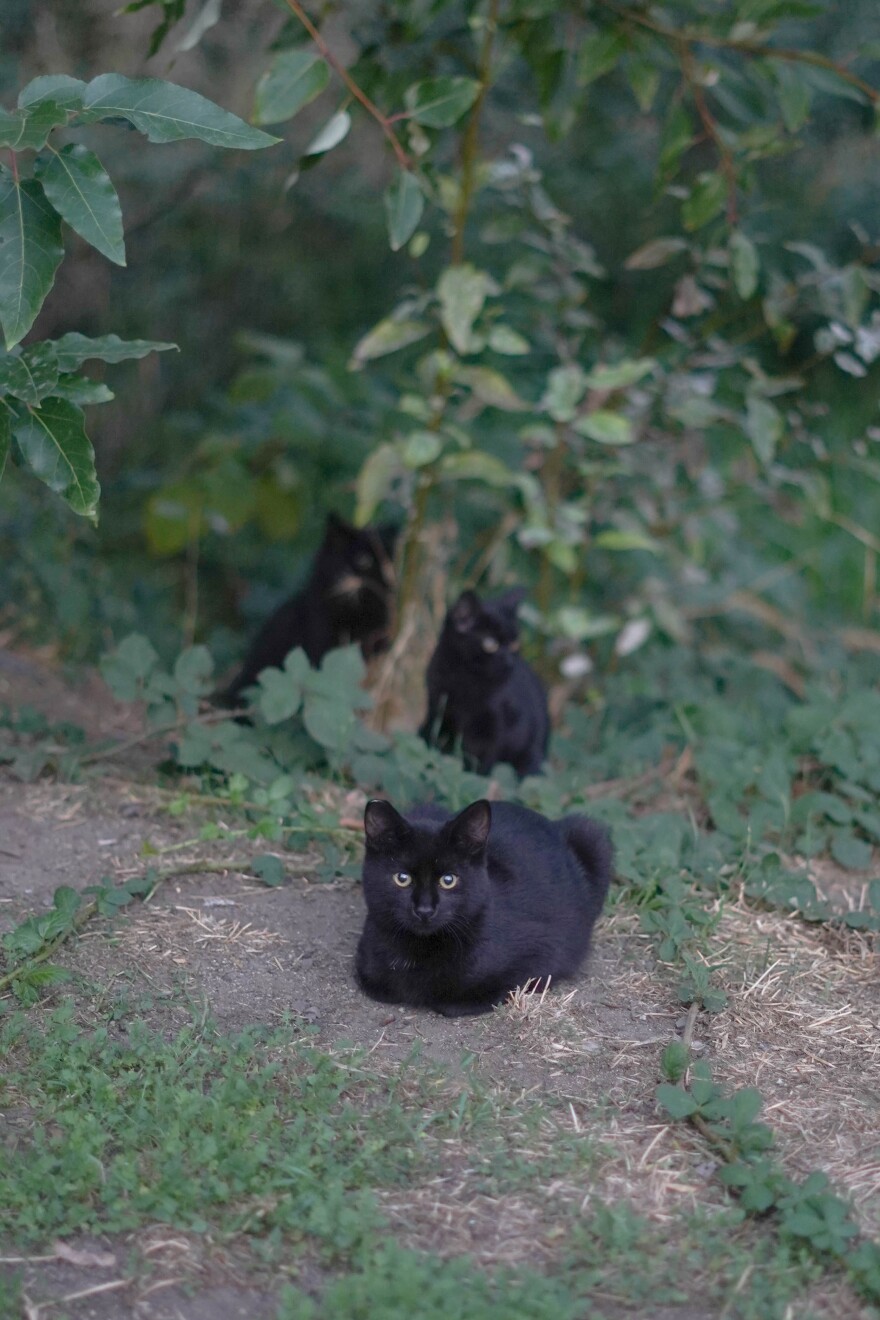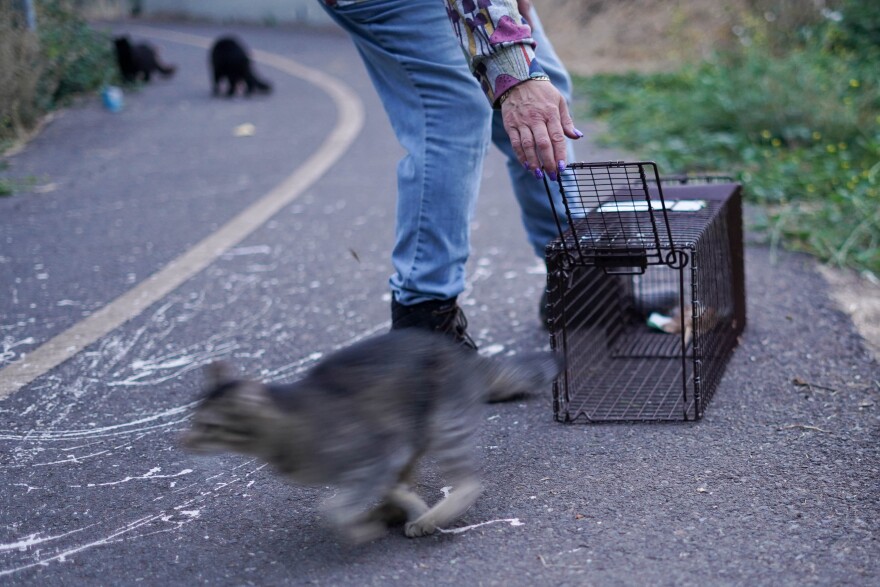Before daybreak, off an empty and dark road in Medford, Diana Moissant gets to work. There are only a few types of people to be found at this location at this time.
“It could be either somebody looking for trouble, somebody doing something illegal or a cat person,” she said.
Moissant is a cat person.
The back of her truck is filled with supplies: cat food, water and wire animal traps.
“This is what I use and it's cost me a lot of money,” she said. “This is sort of what a cat person has in the back of their truck.”

Moissant looks after five cat colonies. This site is her biggest, with around 60 stray and feral cats. She wants to keep its exact location secret to prevent more people from dumping pets there, hoping she’ll look after them.
“I don't want a bunch of riffraff and a bunch of problems,” she said. “It's a quiet area, and I want to keep it that way.”
She's not the only one on this mission. Moissant said there’s a hidden network of people taking care of cats in the Rogue Valley, each with their own territory.
“There are people like me who do this kind of work, and you don't hear about them,” she said. “But they have their little populations and stuff like that.”
The cats notice Moissant’s truck and start appearing from their dens, hidden in bushes and culverts.
“This is usually pretty dramatic, because there have been times where I fed, and there have been 30 cats on this road,” she said. “It's pretty dramatic.”
Soon, dozens of cats calmly strut toward Moissant, looking like they just woke up in time for breakfast. She said she feeds around 120 cats on weekdays and up to 200 on the weekends.
It’s more than a hobby. Being a cat person is in her blood, Moissant explains. She would help her father take care of colonies in her hometown of San Francisco decades ago. They kept up the work when they moved to the Rogue Valley. But her father passed, and she became busy raising children.
Then, a few years ago, she got word of some kittens in this area of Medford.
“So I came, and I investigated," Moissant said. "I discovered a whole new world here."

Not everyone is as grateful as the cats for her work. Some accuse her of enabling the cat colonies. But Moissant said that feeding cuts down the cats' need to hunt wildlife and prevents them from becoming unhealthy and potentially spreading disease.
And she explains that feeding is only part of her work. She finds foster families for kittens in the colony. She’s also on a constant hunt to spay and neuter. In cat person-lingo, it’s called TNR — trap, neuter, return. The goal is to stabilize and shrink the populations.
“My populations, for the most part, they're not bad,” Moissant said. “They're pretty much under control, because this is all I do.”

It’s a service the Rogue Valley desperately needs.
“In the 10 years that I've been here, we're probably in the most critical situation we've ever been in in terms of people bringing animals to us that they can no longer care for and people finding stray animals,” said Karen Evans, executive director with the Southern Oregon Humane Society.
Evans said the population of stray animals has grown in the region. One reason is the record cost of animal care. Some people just can’t afford to keep their pets.
“We are seeing people who are losing their housing and can't find pet-friendly housing,” Evans said. “That's a big one here in the Rogue Valley.”
Even if a pet owner has the money, it can be hard to find an available veterinarian.
“There's a national shortage of veterinarians,” Evans said. “If you go onto a job board for animal welfare jobs, there's just shelter after shelter after shelter looking for veterinarians.”
Moissant, in fact, will soon drive over an hour away for basic animal care.
“I have to go to Selma this week for two cats just to spay and neuter, because I can't find it here in the area,” she said. “I have to go up to Grants Pass. Sometimes I have to turn myself into a pretzel.”
Besides a trickle of donations, Moissant pays for everything herself. She’s not a non-profit or affiliated with any organization. But she is the only local cat person on TikTok. She said she likes the independence.
“I'm not doing anything wrong. I have receipts,” Moissant said.

She has help. Cat people seem to find each other — like Christopher Headrick, who is assisting this morning.
“I've been connected with cats my whole life,” Headrick said.
He’s trying to capture a couple of kittens today for deworming and vaccination.
“Then hopefully find them a forever home,” he said.
Moissant and Headrick set a trap in a patch of tall grass where they think the kitten is hiding. Soon, they catch something.
“We got a cat!” Moissant yells.
“Wrong cat,” Headrick replies.
It’s not the kitten. It’s another cat that’s already spayed — they can tell by a small clip in the cat’s ear. They let the cat loose after getting an earful of annoyed hissing. They’ll try again soon, hoping to catch the kittens before winter.
But for now, their work is over. The sun is rising. The cats, full and content, slip back into the bushes, just as the first joggers and rush of cars heading to work pass by.



